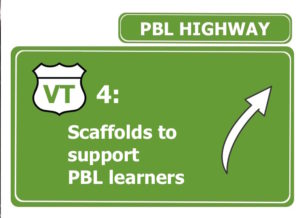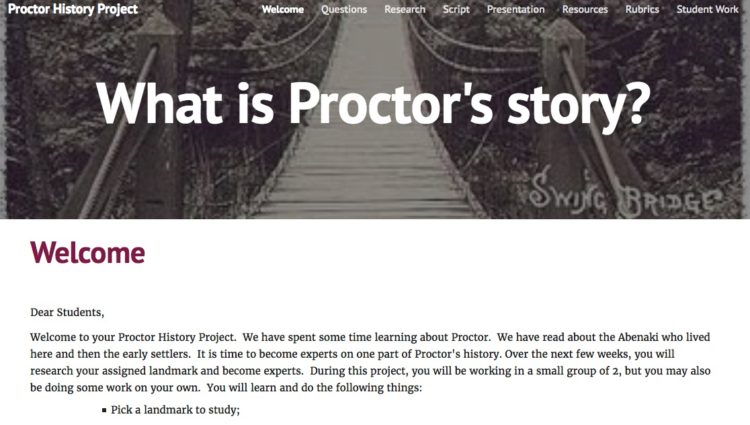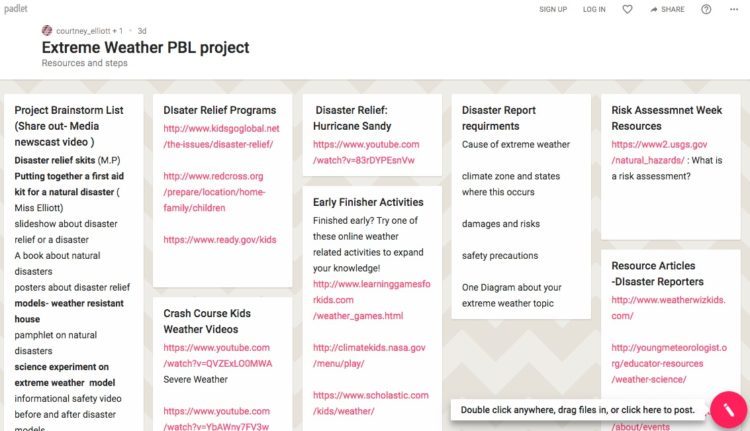Ways to support project-based learning
 Some people have the mistaken idea that PBL is just when you point students in the direction of a project and say, “Go for it!”
Some people have the mistaken idea that PBL is just when you point students in the direction of a project and say, “Go for it!”
Um, no.
If your students have a culture of doing project-based learning and are very independent, it makes sense to give them a lot of freedom — but that’s just not the case for many of our students.
If you have students who are younger, or need more support and structure here are some ideas and examples. It always makes sense to err on the side of having too many supports rather than too few.
Provide a guide
A guide can be as simple as a packet of instructions, a sample PBL project or a giant sheet of butcher paper, marked off into sections.
Some teachers have created Google Docs or even a full website to guide students with their projects
These can be broken up into PBL sections, highlighting the driving question, the research phase, rubrics and scales, and the presentation. Resources can be dropped in as links for students at varying levels. All students can access the materials online, and other students don’t need to know who particularly is accessing what material. Super smart!
How about a Google Site?
In Corey Smith’s grade 4 classroom at Proctor Elementary School, in Proctor VT, a Google Site guides students through each phase of the project. On each page, there are student resources linked and tips for how to proceed. Pages are broken up into the phases of PBL (driving question, research, product, presentation).
In Google Docs, students can have a dialogue with the teacher that is private about the work or a shared conversation with their collaborative team. This is a good place for students to reflect on their PBL experiences and ask teachers (or other students) questions that come up.
Use Padlet to create a frame:
For each section of the project. Courtney Elliott, who teaches grades 4 and 5 at Proctor Elementary, uses Padlet to share scaffolds with her students each day in PBL. See her example for supporting students with their research.
Check out the amazing prompts in this padlet:
Pinned (padded?) guidelines include how to get started, where to go next and fun things to do if students get through all their tasks early. Love it!
Make time for differentiation
Teachers are also noting that because of the role shift of PBL that they have more time to meet one on one or in small groups with students for differentiation. This is a great way to use your teacher time in PBL– to help students more personally at their level.
For example, because you’re not lecturing the whole time, you can become available to sit one on one with students. Because of this I was able to have more meaningful one on one writing conferences and even scribe for a student who was struggling. I could also to drop in comments on Google Docs to each student as they were writing. Immediate feedback, motivation and accountability with students!
Ask for help
Running a PBL classroom is exciting and challenging! If you can get people helping you, the better off student groups will be (as long as they let students lead the way!). The guidance counselor, special educators, para-professionals and allied arts teachers, are all great resources and can bring a different and important lens to the work. And as always, your friendly neighborhood librarian is likely just itching to get asked to lend a hand with the research phase!
I’ve also used parents in this role. If a parent wants to volunteer, partner them up with a student who could use some sustained adult guidance. That attention is often just what a student needs to improve and focus.
Create or provide a project timeline and calendar for students
Students working in teams can use timelines with due dates to break projects into smaller pieces. You can help them break apart the pieces if they get overwhelmed. Project calendars can provide a timeline with checkpoints leading up to the culminating event. This gives focus and motivation to the work. Google Calendars work well for this and Buck Institute has one as well.
Okay, PBL fans. What supports do you use to help students with PBL?



